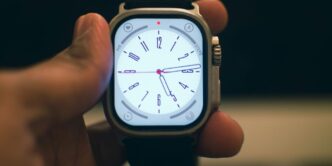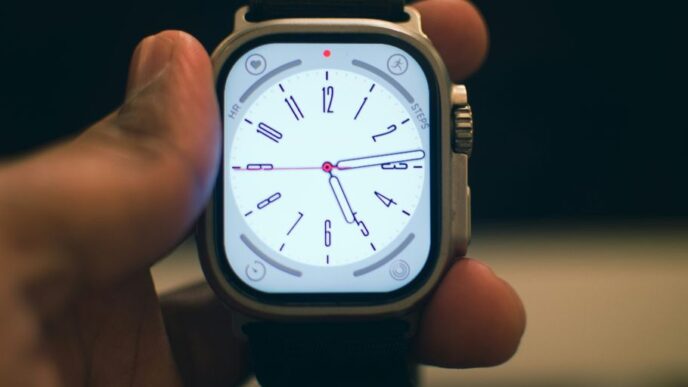Imagine a senior who, like a majestic oak tree weathering the seasons, has stood strong throughout the years but now faces the challenge of maintaining their strength and stability. Telehealth physiotherapy steps in as a beacon of hope, offering tailored support and guidance to help them navigate the winds of change. As you ponder the significance of this virtual lifeline, consider the transformative impact it could have on the elderly community and their ability to thrive independently.
Benefits of Telehealth Physiotherapy for Elderly
By utilizing telehealth physiotherapy for elderly individuals, you can experience improved mobility, reduced falls, and an overall enhancement in your quality of life. Increasing mobility is vital for maintaining independence as you age. Tele Physiotherapy offers personalized exercise programs tailored to your needs, helping you move with more ease and confidence.
Additionally, reducing falls is essential to your safety and well-being. Through telehealth sessions, you can work on balance, strength, and coordination from the comfort of your own home, decreasing the risk of potentially dangerous falls.
Accessibility and Convenience of Tele Physiotherapy
Enhancing the accessibility and convenience of tele physiotherapy for elderly individuals is paramount in ensuring effective and sustainable healthcare options for this population. Tele Physiotherapy addresses challenges faced in elderly care, such as travel constraints and mobility limitations. Studies like the TOP UP study have shown promising results in improving mobility and reducing falls among older adults through tele physiotherapy interventions. Despite the growing interest, there’s still limited evidence on the effectiveness of tele physiotherapy in aged care settings, indicating the need for further research to optimize its outcomes.
In aged care settings, tele physiotherapy offers valuable support, emphasizing the importance of staff training and local support for successful implementation. To secure the future success of tele physiotherapy in elderly care, investing in resources that are tailored to the needs of the aging population is essential. By making tele physiotherapy more accessible and convenient, we can better address the unique healthcare requirements of older adults, ultimately improving their quality of life.
Remote Exercise Programs for Elderly Care
Investing in remote exercise programs for elderly care, such as those utilized in the TOP UP study, can greatly enhance mobility and reduce falls among older adults with travel constraints and mobility limitations. These programs leverage tele physiotherapy to deliver tailored exercise interventions that address individual needs and goals. The remote exercise effectiveness is evident in the outcomes observed, showcasing improvements in balance, strength, and overall physical function. By incorporating WHO 2020 guidelines and Otago exercise programs into 10 video conference physiotherapy sessions over 6 months, participants experience a holistic approach to enhancing their well-being.
For older adults, the convenience of accessing these remote exercise programs ensures they can prioritize their health without the burden of travel constraints. Aged care support staff play an important role in supervising participants and providing hands-on assistance during the sessions, ensuring safety and proper technique adherence. Studying the impact of tele physiotherapy in elderly care settings further solidifies the importance of these programs in promoting mobility, preventing falls, and enhancing overall quality of life for older individuals.
Rehabilitation Guidance via Telehealth
Telehealth physiotherapy offers personalized rehabilitation guidance to elderly individuals through interactive videoconference sessions tailored to their specific needs and goals. Through virtual assessments, telehealth physiotherapists can evaluate your condition remotely and design customized exercise programs following WHO guidelines and Otago programs. During these sessions, aged care staff can provide supervision and hands-on support to guarantee your safety and proper execution of exercises.
Moreover, tele physiotherapy allows for digital progress tracking, enabling continuous monitoring of your rehabilitation journey and adjustments to the program as needed. This method not only enhances access to care but also provides convenience and effectiveness in the comfort of your home.
As the TOP UP trial explores the effectiveness of tele physiotherapy in improving mobility and reducing falls among the elderly, rest assured that your rehabilitation guidance via telehealth is grounded in evidence-based practices aimed at promoting your well-being and independence.
Improved Physical Function With Tele Physiotherapy
Moving forward from the benefits of telehealth physiotherapy in elderly care, the improved physical function achieved through tele physiotherapy interventions is a clear indication of its effectiveness in enhancing mobility and reducing falls in older adults.
Tele Physiotherapy outcomes have demonstrated significant improvements in physical function among the elderly, primarily by focusing on mobility enhancement and fall prevention. Innovative telehealth technology has facilitated the implementation of these interventions, with studies like the TOP UP project showcasing the efficacy of tele physiotherapy models.
By delivering 10 videoconference physiotherapy sessions over six months and incorporating WHO 2020 guidelines and Otago exercise programs, older adults aged 65 and above have experienced tangible benefits. Aged care support staff trained to supervise participants during sessions have played a vital role in ensuring the success of these interventions.
Assessments using tools like the Short Physical Performance Battery (SPPB) test have helped measure the positive impact of tele physiotherapy on physical function outcomes. Overall, tele physiotherapy is an accessible and convenient way to enhance the quality of life for the elderly population while reducing the risks associated with declining mobility.
Managing Chronic Conditions Remotely
Enhancing the management of chronic conditions in elderly individuals through remote physiotherapy interventions provides personalized care and promotes independence in the comfort of their own homes. With telehealth physiotherapy, remote monitoring becomes feasible, allowing for tailored care plans that cater to the specific needs of each individual. This personalized approach guarantees that elderly patients receive the attention and treatment necessary for managing their chronic conditions effectively.
Through remote monitoring, physiotherapists can track progress, provide guidance, and make real-time adjustments to exercise programs, enhancing adherence and overall outcomes. The convenience of accessing physiotherapy sessions from home reduces the barriers to consistent care, ultimately supporting elderly individuals in maintaining their mobility and functional independence.
Enhancing Quality of Life Through Telehealth
Improving the quality of life for older adults can be achieved through personalized tele physiotherapy interventions tailored to their specific needs and preferences. Telehealth innovations offer a vital and markedly effective way to engage elderly individuals in physiotherapy programs, enhancing their overall well-being.
By utilizing video conference sessions, tele physiotherapy interventions focus on improving mobility, reducing falls, and promoting independence in line with established guidelines like the WHO 2020 recommendations and Otago Exercise Program. These programs not only aim to prevent mobility decline but also to optimize geriatric well-being by delivering evidence-based exercise protocols.
Emphasizing staff training, local support, and adherence to tailored care plans, tele physiotherapy contributes significantly to the quality of life for older adults. By providing accessible and personalized services, telehealth interventions play an important role in supporting elderly individuals in aging with dignity and maintaining their functional abilities, ultimately enhancing their overall quality of life through improved engagement and outcomes.
Tele Physiotherapy During Restricted Mobility
To address restricted mobility in older adults, tele physiotherapy serves as an important solution offering access to physiotherapy services without the necessity of travel. For individuals with limited mobility, virtual mobility sessions through tele physiotherapy can play a significant role in improving their physical well-being. By engaging in these sessions from the comfort of their homes, older adults can receive personalized care and guidance tailored to their specific needs.
Tele Physiotherapy outcomes have shown promise in enhancing mobility and reducing falls among older adults with restricted movement. While further research is needed to fully understand its effectiveness, initial studies like the TOP UP study have demonstrated positive results in improving overall mobility and reducing the risk of falls in this population. Additionally, investing in resources that are user-friendly for older adults is important in ensuring the accessibility and success of remote physiotherapy services.
Social Distancing Measures and Telehealth
Amidst current challenges, embracing telehealth for physiotherapy empowers elderly individuals to prioritize their well-being while maintaining social distancing measures.
The importance of telehealth in physiotherapy is evident in the positive outcomes it brings to older adults. By leveraging virtual care, seniors can access necessary physiotherapy services while benefiting from the social distancing advantages it offers.
These measures not only reduce the risk of exposure to infectious diseases, including Covid-19 but also guarantee the continuity of care for elderly individuals facing difficulties in attending in-person appointments.
Telehealth interventions play a significant role in delivering safe and effective rehabilitation services to older adults, especially in times of restricted mobility and limited face-to-face interactions.
Through telehealth, older adults can maintain their well-being and independence by accessing essential healthcare services in a manner that minimizes physical contact and promotes adherence to social distancing guidelines.
Telehealth Physiotherapy Amid Covid-19
During the Covid-19 pandemic, telehealth physiotherapy services experienced a significant increase in adoption to guarantee safe and accessible care for elderly individuals.
The utilization of telehealth innovations in physiotherapy helped mitigate infection risks for older adults, particularly those at higher risk of severe illness from Covid-19.
Remote physiotherapy sessions via telehealth platforms enabled ongoing care and treatment for elderly individuals while adhering to social distancing measures, ensuring their wellness was prioritized.
These services played a pivotal role in maintaining continuity of care and managing mobility issues in elderly populations during the pandemic.
The rapid expansion of telehealth physiotherapy services during Covid-19 highlighted the importance of leveraging technology to support the health and well-being of older adults.
Conclusion
In the domain of elderly care, telehealth physiotherapy is like a guiding light in the darkness, illuminating the path to improved mobility, enhanced quality of life, and independence.
With remote exercise programs and personalized guidance, this innovative approach breathes life into tired muscles and weary bones, allowing older adults to thrive in the comfort of their own homes.
Embrace the power of tele physiotherapy and watch as your loved ones soar to new heights of physical well-being.













